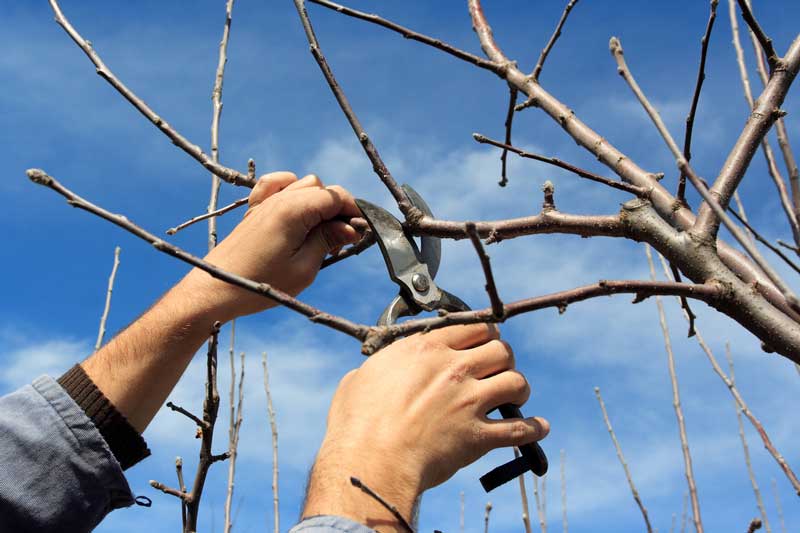Regularly pruning walnut trees is essential for maintaining their health and maximizing nut production. This practical guide outlines how to train young trees, care for mature ones, and choose the right tools for the job.
Training Young Trees: Building a Strong Structure
After 1 to 2 years, begin shaping your walnut tree to feature a single main trunk and 4 to 6 lateral branches. This structure aids in keeping the tree well-ventilated and ensures optimal light and nutrient circulation. When doing this, it’s important to remove competing secondary branches, leaving only one dominant leader at the top. Follow the 3-to-1 rule, maintaining side branches that are no thicker than one-third of the trunk’s diameter.
As you prune, eliminate crossing or weak branches that could waste energy and resources. Removing low-hanging branches below 1.2 to 1.5 meters not only improves the tree’s appearance but also enhances its efficiency.
Caring for Mature Trees
For mature walnut trees, plan to prune every 3 to 5 years to uphold their shape and health. During these sessions, always cut away any diseased or damaged branches to prevent the spread of diseases within the tree. Look out for bifurcated branches, which can be nutrient-hogs; it’s best to remove these or transform them into a single, more robust branch.
When making cuts near the trunk, always try to use a 45-degree angle to minimize damage to the tree, promoting better healing and growth.
Choosing the Right Tools
Select the right tools to ensure effective pruning. For thinner branches (up to 5 cm), use pruning shears. A hand saw is ideal for medium-sized limbs (5 to 15 cm), while a chainsaw is necessary for branches over 15 cm in diameter. Always prioritize safety by using a ladder or lift to reach high branches, and consider having someone assist you during the process. For particularly large trees, hiring a professional arborist may be the safest option.
Tips and Warnings
When pruning young trees, it’s generally easier and leads to better visual form. The best time for pruning is late winter, right before new leaves emerge, helping to prevent excessive sap loss. Always equip yourself with protective gear and carefully plan where falling branches will land to avoid injuries.
By adhering to this guide, you’ll foster a healthy, well-structured walnut tree that yields an abundance of nuts in the future! 🌳🌰


Attractive section of content. I just stumbled upon your website and in accession capital to assert that I acquire in fact enjoyed account your blog posts. Any way I will be subscribing to your feeds and even I achievement you access consistently fast.
Woh I enjoy your posts, saved to my bookmarks! .
I’ve been exploring for a little for any high quality articles or blog posts on this kind of area . Exploring in Yahoo I at last stumbled upon this web site. Reading this info So i am happy to convey that I’ve an incredibly good uncanny feeling I discovered just what I needed. I most certainly will make sure to do not forget this web site and give it a glance regularly.
Valuable info. Lucky me I found your web site by accident, and I am shocked why this accident did not happened earlier! I bookmarked it.
Very interesting points you have mentioned, appreciate it for putting up.
I really like forgathering useful info, this post has got me even more info! .
I am continuously invstigating online for articles that can help me. Thank you!
I’d have to examine with you here. Which is not one thing I usually do! I take pleasure in reading a post that may make folks think. Additionally, thanks for permitting me to comment!
That is the best blog for anyone who desires to seek out out about this topic. You notice a lot its almost hard to argue with you (not that I actually would want…HaHa). You definitely put a new spin on a subject thats been written about for years. Nice stuff, simply nice!
https://t.me/s/officials_pokerdom/4081
https://t.me/s/Volna_officials
It’s really a nice and useful piece of info. I’m glad that you shared this helpful info with us. Please keep us informed like this. Thanks for sharing.
Hello! I just would like to give a huge thumbs up for the great info you have here on this post. I will be coming back to your blog for more soon.
Thanks for this marvellous post, I am glad I found this web site on yahoo.